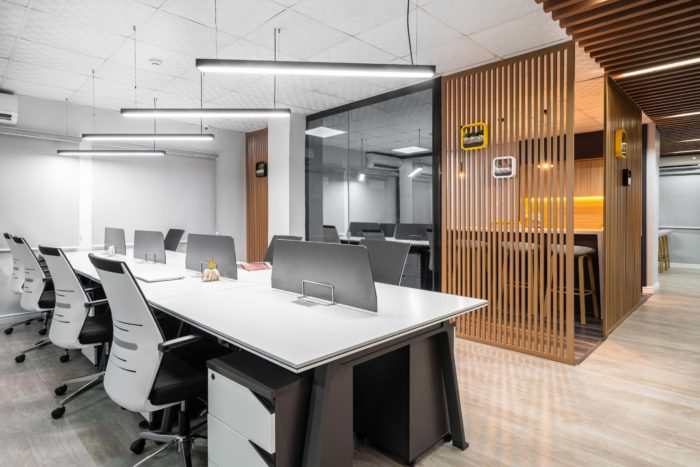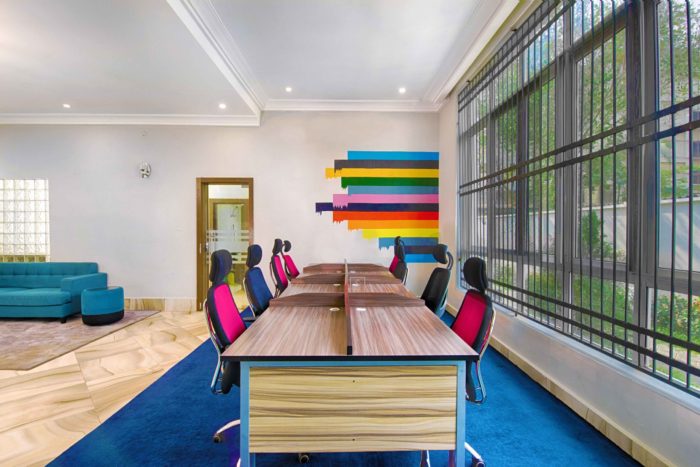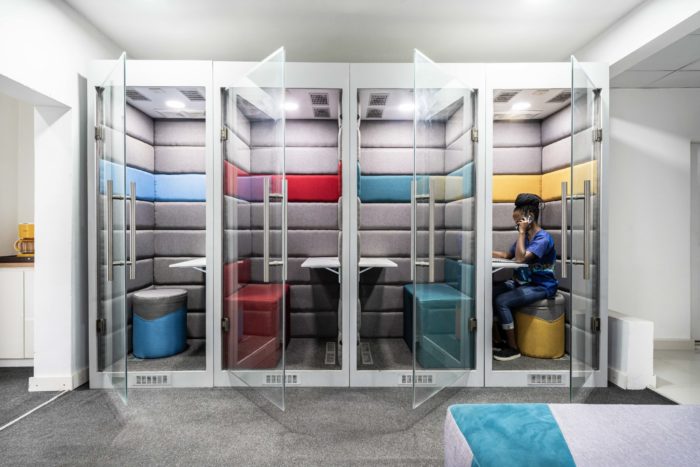The workplace was once a very sterile and drab space. Once workstations are arranged in a row with laptops, an office was created and high productivity was demanded by supervisors and superiors. However, studies have shown over the years that these arrangements do not promote productivity in the office. Several companies have released that the workplace needs to be flexible and provide an inspiring atmosphere.

Figure 1 Open Office space (kuda)
To achieve this, a combination of creativity, open-mindedness, unexpected solutions and a desire to change the status quo are necessary. According to many studies, the most significant factor that determines an employee’s ability to focus is the environment they are in. Did you know a well-designed office can increase your productivity levels by 20%? (Todd, 2023)
Key elements of design that increase office productivity.
Flexibility – Before putting up the office space, some things have to be taken into consideration such as the needs and challenges of the team, Factors in the company’s culture, personalities, various working styles, and budget. For example, open plans have been in place for years now. However, a study by Elsevier on Workspace Satisfaction by Jungsoo Kim and Richard de Dear has found that private offices make employees more productive and happy. It is understandable that it is expensive to create private offices for everyone — it also may not align with your culture’s flexibility and free-thinking. An awesome alternative would be, to invest in standing desks or encourage the team to work wherever so desired in the space.

Figure 2 Open office layout. (Paystack)
Be on the move – Most workers are at their most productive if they have reasonable space to move around freely. Having a sedentary lifestyle is counter- productive and the ability to concentrate is reduced.
An easy way around this would be to provide stand-to-sit-desks. Office equipment can be strategically placed to aid movement around. For example, the print station can be on the other side of the office. Multi-purpose areas where people can exercise can be created. Encouraging walking meetings instead of relying on a conference room. This improves overall health, reducing stress, and increases energy levels. (Ritchie, 2019)
Create Office Zones:
Various should be created in the office to cater to different tasks. Such as:
- Collaboration zones that encourage your team to mingle and exchange ideas in an informal setting.
- Fun zones, such as break-out spaces or games rooms, are very important for employee wellbeing and offer a change of scenery and a place to switch off.
- Quiet zones where people can take a nap or think without being distracted or disturbed
- Private zones or pods where employees can work on their most essential tasks in peace and quiet.

Figure 4 Kitchenette (Paystack)
Bring the outdoors indoors – It is well known that people are happier when close to the outdoors. Therefore, offices that maximise natural light, use natural wood and textures and utilise plants be it natural or faux have seen increased productivity levels. Lighting can affect everything from workplace safety to productivity to mental health. More specifically, natural light is essential for circadian rhythms and can boost happiness and Vitamin D intake.
If having direct natural light is a difficulty in your workplace, mirrors and reflective furniture can be utilised. The aim is to amplify the natural light that trickles in. Full spectrum bulbs that mimic natural light can be utilised also.
Colour me happy – Different colours have various effects on our emotions and behaviour. Here are how the following primary colours impact the psyche.

Controlling noise – Noise has been recognised as the main disturbance factor in an office. The acoustics of the workspace play a major role in staff wellbeing and productivity. Adding acoustic panelling to walls and ceilings absorbs sound and thereby helps reduce distractions.
On the other hand, it is important to note that some workspaces can be too quiet for individuals, making them feel self-conscious and unwilling to vocalise ideas or make calls. There has to be a balance to maximise productivity.

Art and Personal Items– Besides incorporating plants, artworks can be added to spice up the workplace. According to a Business Committee for the Arts and the International Association of Professional Art Advisors survey, 94% believed art enhanced the work environment. Also, 64% experienced an increase in creativity and productivity. Art helps to make a statement and can also be used to communicate your brand values across the office space.